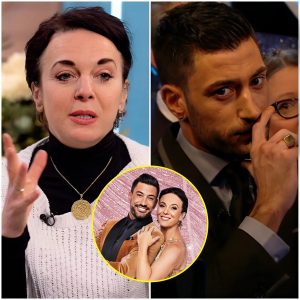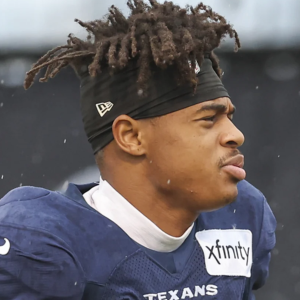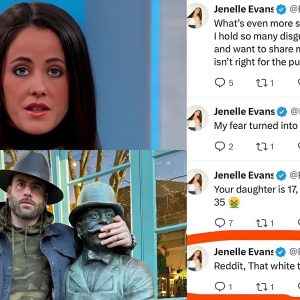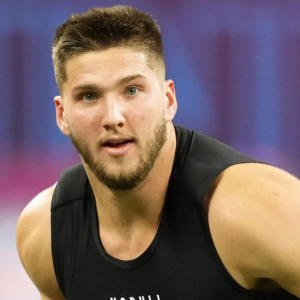It hasn’t been much fun for the Washington Commanders’ fans over the last, oh, three decades or so. The franchise has struggled to engage the fan base thanks to poor play, mediocre coaching, and a stadium nobody seems to like. But new owners have taken over, they drafted a new quarterback with the No. 2 pick overall, and ranking the 10 greatest Commanders’ players of all time might bring back good memories.
There may be people on this list that Commanders’ fans think shouldn’t be there. The top five are probably universal for Washington’s history. Spots six through 10 are surely open for debate.
The approach involves the impact these people had for the organization. That’s why the top two spots could be 1 and 1A. Both of these men forever changed the franchise, and it’s hard to say who impacted it most. Since history can’t be changed (that is, until they perfect the plutonium-fueled nuclear reactor in that 1981 DeLorean DMC-12) , we can say one man couldn’t have done it without the other. But for water-cooler purposes, we’ll break the tie. Stick around until the end to find out!
The franchise began in 1932 as the Boston Braves. Five years later, it moved to Washington, D.C., and the nickname became “Redskins,” which stayed until was changed, laughably, to “Football Team” in 2020 before it became the more-respectable “Commanders” in 2022.
WR Art Monk one of Commanders’ most popular players
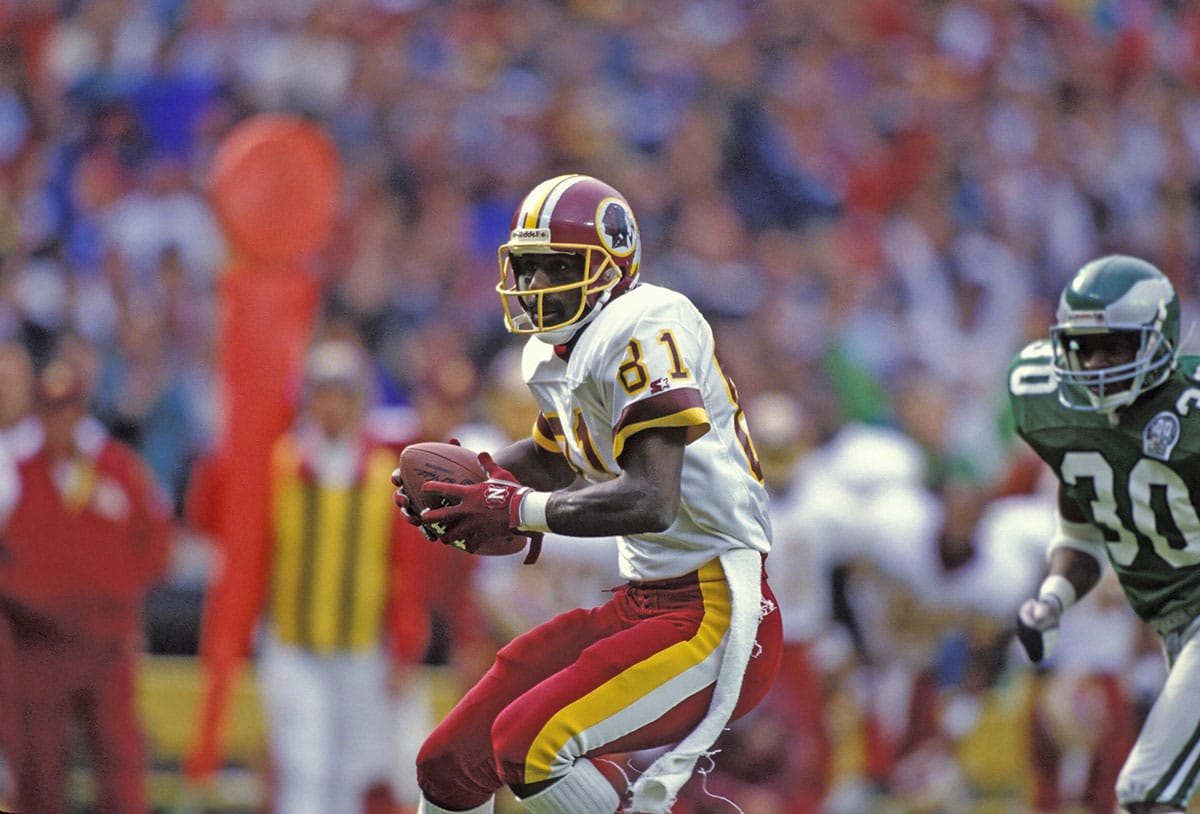
For those who are willing to play along, and to avoid a spoiler-alert situation, the featured photo is of player No. 4.
If this list was ranked according to popularity, Monk might have a shot at the top spot. He came in as a rookie in 1980 and was a lineup fixture for 14 seasons. He played on all three Super Bowl champions for Washington and became a Hall of Famer despite playing with a mixed bag of quarterbacks throughout his career.
It should be noted that this top 10 does not include other popular players, such as Sammy Baugh, Sonny Jurgensen, Ken Houston, Charley Taylor and Chris Hanburger. They were all fine players, but this list targets the players who made the biggest impact for the franchise. And the only great run it ever had came from 1982-1991.
Let the countdown begin:
10. DE Dexter Manley, the beast
Manley was selected in the fifth round of the 1981 NFL Draft by Washington, and he quickly made other teams realize they made a mistake.
By this third season, he reached double-digit sacks, and in 1986 earned All-Pro honors. He totaled 18.5 sacks that year and earned the runner-up spot in the AP defensive player of the year voting. In nine seasons with the Commanders he had 8.5 or more sacks in seven of them.
Manley’s relentless pursuit of the passer and top-level tackling skills made him a critical part of the Washington defense.
But what Manley will most be remembered for is the play against Dallas in the 1982 NFL Championship game. Nemesis and longtime rival Dallas came to RFK Stadium. The first thing Manley did was knock Cowboys quarterback Danny White from the game.
Then with seven minutes left in the fourth quarter and Washington leading 24-17, Manley leaped into the air and deflected QB Garry Hogeboom’s screen-pass attempt. Darryl Grant grabbed in out of the air and raced 10 yards for the game-clinching score.
Watch the play here.
Manley’s inclusion in the Top 10 isn’t because of one play, but it sure helped.
9. OT Dave Butz, the mountain
By the time Washington became a mainstay near the top of the NFL, Butz had been in the league for almost a decade.
Drafted by the St. Louis Cardinals in the first round in 1973 (No. 5), he came to Washington in 1975. All it took were two first-round picks and a second-rounder. (Oh, that George Allen. The head coach who once traded the same pick twice. But this turned into one of Allen’s better draft-pick trading moves).
The reason for Butz’ value came in two major forms. First, he stood 6-foot-7 and weighed 291 pounds — a mountain of a man. Second, he could not be moved by offensive linemen.
When Joe Gibbs put his ball-control offense into place in the early 1980s, it needed to do two things to be successful — run on offense and stop the run on defense. It didn’t always matter who played on either side of Butz, running up the middle — which NFL teams loved to do in those days — turned into a no-fun zone.
In 1983, Butz finished third in the AP defensive player of the year voting and earned All-Pro honors. Surrounded by players like Manley, Grant and Charles Mann, Butz recorded a career-high 11.5 sacks. He followed up in 1984 with a second-team All-Pro selection.
8. WR Gary Clark, the elusive
When NFL people talk about a “freak,” they usually mean some big guy who also runs incredibly fast with a ton of strength. But Clark was a freak in a different way.
At 5-foot-9 and 173 pounds, he could be guarded about like Miami’s Tyreek Hill can be these days. As a rookie in 1985 — he came to Washington in the second round of the draft after the USFL had folded — Clark caught 72 passes for 926 yards and five touchdowns.
In his second season, Clark’s 74 catches for 1,265 yards were second in the NFC only to — Jerry Rice!
On a team that like to control possession and eat clock, Clark turned in five 1,000-yard receiving seasons over a six-year span. And his touchdown totals for those years were 7, 7, 7, 9, 8, 10. Consistent and superb. He earned three All-Pro honors, including a first-team spot in the strike-shortened 1987 season.
Also, Clark presented availability. In his eight seasons in Washington, Clark played in 16 games five times and 15 twice.
7. QB Joe Theismann, the leader
Drafted by the Miami Dolphins in 1971, Theismann didn’t sign and played in Canada for three seasons. The Redskins traded a No. 1 pick for his rights (there’s that George Allen again), and he began his Washington career as — a punt returner.
But by 1978, Theismann earned the starting role. And in 1982, he led the franchise to its first-ever Super Bowl victory, ironically beating the Dolphins in the final game.
Theismann’s career was gruesomely cut short by Lawrence Taylor’s Monday Night Football sack in 1985. But the numbers were strong. He passed for over 2,500 yards six times in a seven-year stretch, including 3,568 in 1981 before Gibbs installed the run-first approach. And Theismann became a perfect complement to the strategy, consistently taking advantage of defenses that had no choice but to load up and try to stop the running game.
In 1983, Theismann threw for 3,714 yards and 29 touchdowns on an offensive juggernaut team. He earned AP most valuable player and offensive player of the year awards.
6. Russ Grimm, the worker
Washington had tremendous skill players, but that big, porky offensive line made things click in the 1980s. Nicknamed The Hogs, the group made a living with consistent blocks and ruining every defensive scheme. The trademark came in the form a devastating counter-trey run.
And Grimm, a third-round pick in 1981, made it work. For three straight years (1093-85), the 6-3, 270-pounder turned in All-Pro performances. And he earned second-team honors in 1986.
Offensive line coach Joe Bugel told profootballhof.com, “He was one of the most complete football players, and people, that I’ve ever coached. He could play all the positions – center, guard, and tackle. He just came to work every day.”
Show up. Work. Block. Win. Sleep. Rinse. Repeat.
Teammate Joe Jacoby said, “He was probably one of the smartest individuals as far as a football mind; as far as the intricacies of the game, figuring out something, blocking schemes, game plans.”
5. Joe Jacoby, The Hog
Like Butz, Jacoby’s size proved to be a mountain for opponents to climb. He stood out at 6-foot-7 and 305 pounds.
Somehow Jacoby didn’t get drafted in 1981. The Redskins signed him as a free agent and he became the heart and soul of the ground game. He earned back-to-back All-Pro honors (1983-84) and added Pro Bowl awards in 1985-86.
Jacoby was part of all three Super Bowl-winning teams. Former teammate Jeff Bostic told espn.com that Jacoby was ahead of his time.
“I don’t think the NFL had seen a guy like Jacoby when he came on the scene,” Bostic said. “He ran a 5.1 in the 40; he was strong as an ox. On the field, it was sheer power. He would get guys and pick them off the ground and throw them like rag dolls. For raw strength, the guy was unbelievable.”
Washington often went as far as The Hogs took them, and Jacoby led the way in that famous group.
4. Art Monk, the consistent
Washington had only three first-round picks from 1969 to 1990, and two of them became Hall of Famers. One of those guys was Monk, picked No. 18 overall.
At 6-3 and 210 pounds, Monk’s size and speed proved to be an unstoppable equation for opposing defenses. He earned All-Pro honors in 1984 (first team) and 1985 (second team), and earned a Pro Bowl spot in 1986.
Consistency and longevity turned out to be difference-makers for Monk. He finished his career with 12,721 yards receiving to go along with 68 touchdowns. His two best seasons came in 1984-85 when he caught a then-NFL record 106 passes and followed up with 91 the next season.
In a nine-year stretch, he caught five or more touchdown passes seven times. That’s impressive for a team that would run the ball almost exclusively when it got inside the 10-yard line.
Teammate Darrell Green, the other first-rounder who made The Hall, told espn.com that Monk made him better,
“When I got a chance to play against him, I was obviously in awe,” Green said. “I think that the competition with him is what helped me become what I am.”
3. CB Darrell Green, the speedy one
When it comes to popularity, Green stands tall among Washington fans. Drafted in the first round in 1983, he turned out to be an instant success and earned a runner-up spot for AL defensive rookie of the year.
In a shockingly long career — Green played 20 seasons! — he earned three All-Pro honors and seven Pro Bowl selections. He picked off 54 passes and scored six touchdowns.
A defensive missile at 5-9 and 184 pounds, Green’s speed reached legendary proportions. In the 1986 Wild Card playoffs, Green did the unthinkable when he ran down Rams running back Eric Dickerson from behind.
Watch the play here.
If you don’t see the speed, consider that Green reportedly ran a 4.09 time in the 40 during Washington’s 1986 training camp. That is believed to be the fastest time in NFL history.
Teammate Brian Mitchell told redskins.com that Green “signified perseverance and competitiveness, and he was an all-around great guy at the same time. We were able to watch him for 20 years, and as far as I’m concerned he never failed us. He was always a stalwart in the community and he always maintained a good heart.”
2. Joe Gibbs, the coach
There’s only one reason Gibbs is No. 2 instead of in the top spot. That’s because he didn’t get on the field. He probably would have if it had been allowed.
It took five games for Gibbs to get his footing in the NFL as Washington started 0-5 under his control. Over the next 2 1/2 seasons, Washington went a stunning 30-6 and earned the franchise’s first Super Bowl title.
Gibbs guided Washington to a record of 124-60 from 1981-92 and the team to Super Bowl wins in 1983, 1987, 1991, and a loss in 1983.
Making matters even more impressive, he did it with three different quarterbacks: Theismann, Doug Williams, and Mark Rypien. He’s the only head coach in NFL history with multiple titles who can’t be tied to one quarterback.
Gibbs’ innovative offensive strategies and rock-solid leadership made him one of the greatest head coaches of all time. And maybe his greatest coaching move of all time came when he convinced a retired running back to return to the NFL.
1. John Riggins, the foundation
Drafted in the first round (No. 6 overall) by the New York Jets, Riggins brought a rare combination of power and speed to the NFL.
He came to Washington in 1976, but didn’t begin to soar until the 1978 season. He rushed for 1,104 yards and followed up with 1,153 the next season, totaling 14 touchdowns across the two years.
Riggins left football in 1980. He walked out of training camp, seeking a guarantee on the final year of his $300,000 contract. And he sat out when the club refused to renegotiate.
When he returned to the field in 1981, Gibbs figured out how to use him. Handoff after handoff, especially in the postseason, and defenses wore down against The Hogs’ and Riggins’ brute strength.
Riggins earned his spot atop this list in part for what he did in the 1982 playoffs. He carried a rocking-chair 25 times for 119 yards against Detroit in the first round of an eight-team tournament-style playoff format because of the strike. Against Minnesota, he had 37 attempts for 185 yards a touchdown. And in the championship against Dallas, he carried 36 times for 140 yards and two scores.
But he saved the best for last, rushing 38 times for 166 yards and a score in the 27-17 win over Miami in the Super Bowl. Oh, and that one touchdown, is arguably the greatest moment in Washington football history.
Watch the play here.
Riggins carried the ball 375 times in 1983, and 327 in 1984. He totaled 2,586 yards those seasons and scored a ridiculous 38 touchdowns — including a then-NFL record 24 in 1983.
But where it all started was 1982, and that’s how Riggins got to the top of this list.

